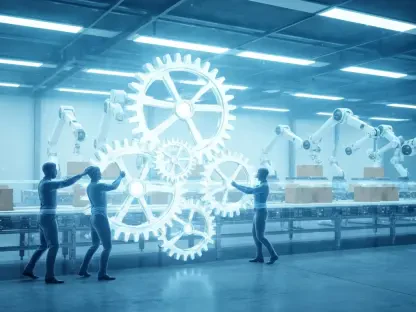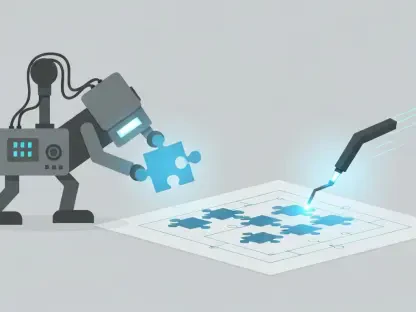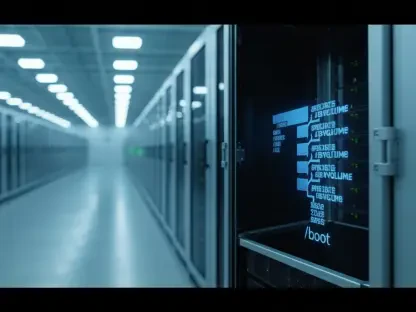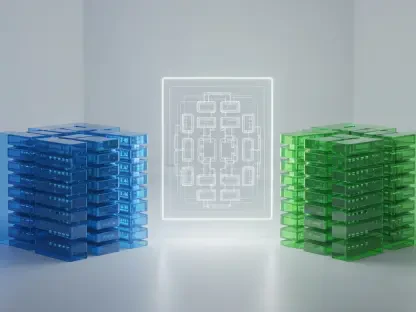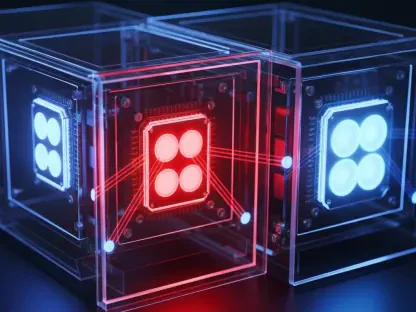The landscape of automation planning has experienced a groundbreaking shift with the release of FANUC’s ROBOGUIDE Version 10, an advanced software that caters to the growing demands of industries seeking efficient and cost-effective solutions. In an age where reducing overheads without compromising quality is paramount, this latest version provides a notable edge. Instead of relying on traditional methods that incur substantial expenses through physical prototyping, manufacturers can now leverage sophisticated simulation and programming capabilities to visualize outcomes virtually. ROBOGUIDE V10 is equipped with new functionalities, notably virtual reality integration, which revolutionizes the user experience by offering an interactive and immersive 3D environment. This environment significantly enhances the spatial awareness of engineers and operators, allowing them to intuitively engage with automation design and identify possible pitfalls early. These enhancements reflect a broader trend of embracing digital solutions to refine automation processes and meet the evolving needs of an ever-dynamic industrial sector.
Cutting-Edge Features Redefining Automation
FANUC has propelled automation into the future with its latest software’s VR capabilities, which allow engineers to gain unparalleled insights into design possibilities before incurring the costs of physical prototypes. This groundbreaking feature not only improves spatial recognition but also empowers operators by creating a virtual workcell environment where they can interactively modify designs and strategies. The result is a massive reduction in potential errors that would otherwise surface during production. Complementing these innovations, the transition to a 64-bit architecture ensures that the software meets the increasing demands for complex automation systems. Enhanced processing power allows ROBOGUIDE V10 to handle intricate tasks and massive datasets efficiently, making the development of advanced robotic solutions more seamless. In addition, the modernized user interface, with its intuitive ribbon-style toolbar and drag-and-drop capabilities, greatly simplifies navigation. These enhancements streamline operations, making the software more accessible and reducing the learning curve for both seasoned engineers and newcomers to the field.
Streamlined Design and Integration Processes
ROBOGUIDE V10 also refurbishes its approach to integrating CAD files, reflecting FANUC’s dedication to improved compatibility with multiple native CAD formats. This upgrade in CAD import functionality provides significant benefits, as it reduces the time and effort spent transferring plans from design to production. Integrating these files directly into the software accelerates the workflow and allows for a more accurate representation of the projected outcome. For manufacturers, this streamlined process means a considerable reduction in design errors and a smoother transition from conceptualization to deployment. Eric Potter, FANUC America’s General Manager of the Robot Application Segment, has emphasized the importance of these features in meeting the dynamic challenges that today’s automation industry faces. ROBOGUIDE V10’s shared licensing model with its predecessor ensures users can enjoy flexibility in accessing the software without being tethered to one version. This strategy underlines FANUC’s understanding that user needs vary, and offering adaptable solutions is key to addressing these diverse requirements effectively.
Future Considerations and Impact
The launch of FANUC’s ROBOGUIDE Version 10 marks a transformative phase in automation planning, answering the mounting demand for effective and economical industry solutions. In an era prioritizing lowered costs without quality compromise, this update offers a significant advantage. Traditionally, manufacturers relied on expensive physical prototyping; now, Version 10 allows them to harness advanced simulation and programming for virtual result visualization. A standout feature is its virtual reality integration, revolutionizing user engagement by creating an interactive 3D environment. This enhancement boosts the spatial awareness of engineers and operators, facilitating intuitive automation design interaction and early detection of potential issues. Version 10 exemplifies the broader industrial trend of adopting digital solutions to optimize automation processes and adapt to the ever-changing industrial landscape. This approach not only enhances efficiency but also ensures that the industry can keep pace with technological advancements and maintain a competitive advantage.


